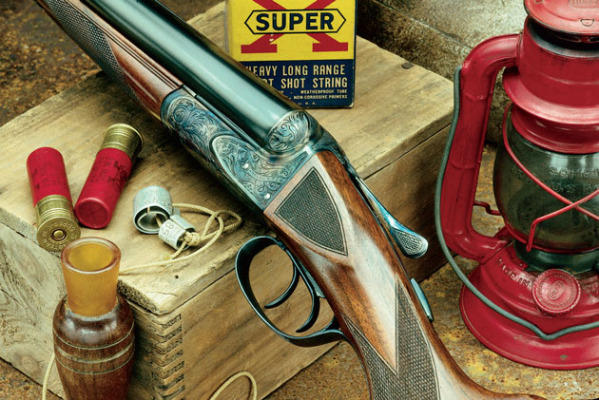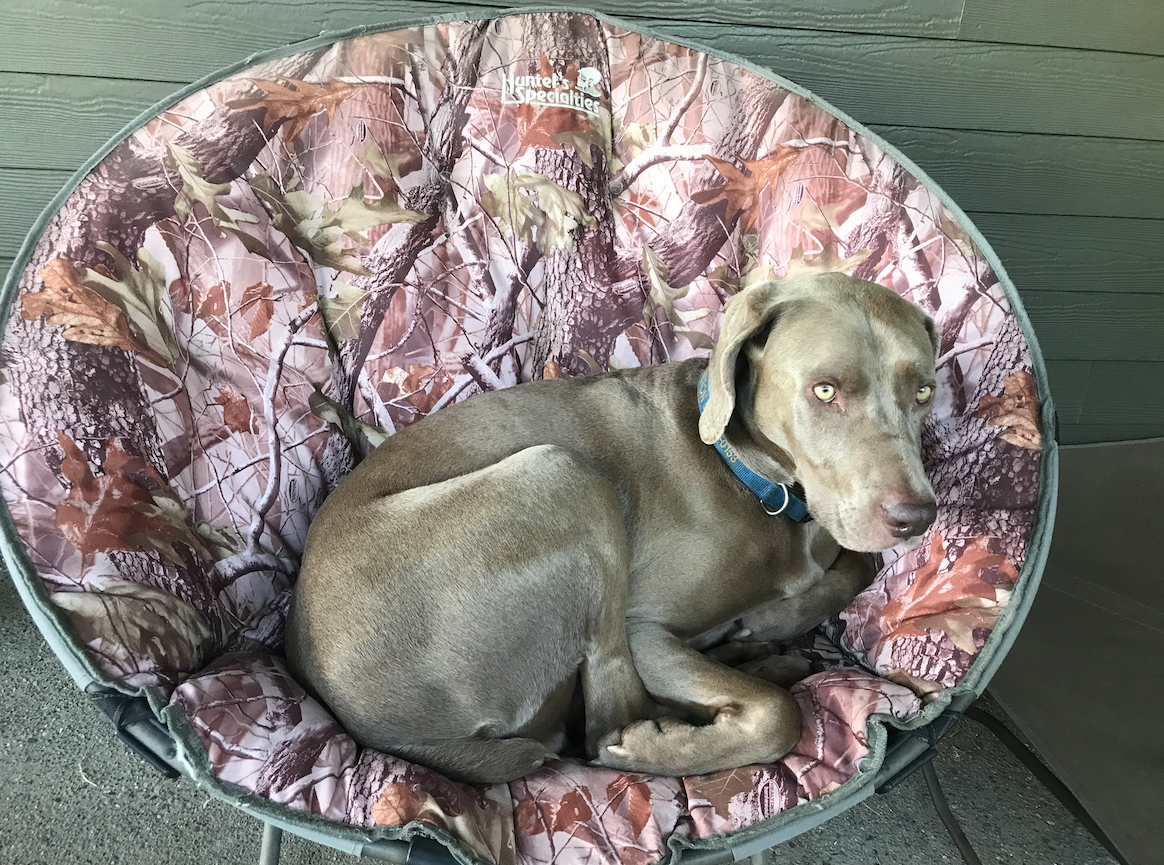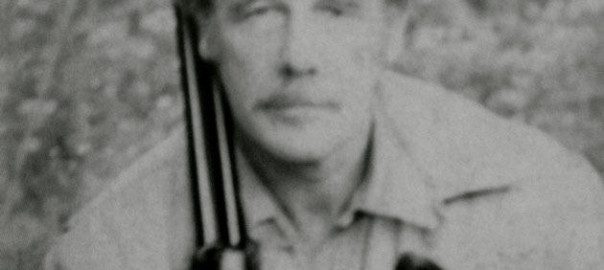A simple but effective technique has proven workable to many gun collectors. And it’s almost as classic.
One of the finer points of gun collecting, if not the finest, is the ability of concealing from your wife: (1) the fact that you have actually purchased a new gun or (2) what the new gun actually cost in terms of carpeting, new fur coats or kitchen cabinets. As a somewhat scarred veteran of this war, I have been left with several suggestions that I swear have worked either for me or an accomplice.
A very simple but effective technique has proven workable to many gun collectors. And it’s almost as classic. Your neighbor, who doesn’t shoot to your wife’s certain knowledge, comes over some evening with a long parcel rather carelessly wrapped in old newspapers. It is extremely important the newspapers be old. The nearer the headlines are to the Battle of Jutland, the less the suspicion. (There is always suspicion…all we can really ever do is bring it down to where we can cope with it). Now since you have given your neighbor, Bob, a full quart of Virginia Gentleman to play the role…to wear the mask…he has no doubt done a smidgin of rehearsal. The conversation should go something like this:
You: Hi there, Bob! What you got all wrapped up, that old antique floor lamp you wanted me to help you re-wire?
Bob: No, and I kind of hate to bother you with this, but we run across this old gun in a second-cousin’s attic the other day and he asked me if I knew anyone who’d kind of look after it for him while he’s in Saudi Arabia working for the oil company.
You: I hope it’s not valuable…if it were…
Bob: No, he doesn’t think so. I think he got it for about ten dollars years ago, and he’s been meaning to make a lamp out of it but never got around to it.
You: Well, let’s have a look. (You unwrap the gun, a magnificent single-barrel Parker trap gun that you have artfully disguised for the time being by random wrappings of old friction tape over the 24 lines-to-the-inch checkering. You casually dismiss the gun as a clunker by pushing it off to one side with your foot as you read aloud from some of the old headlines about the raiding of speakeasies or something.)
Bob: I told you it was just something he got stuck with…why for ten dollars…
You: Well, don’t worry about it. I’ll put a little kerosene on the rust spots so they don’t get any worse and stick it out in the garage.
Bob: Well, thanks a million for your trouble. I’ll tell cousin Dave that you’ll hold on to it for him. Be seeing you.
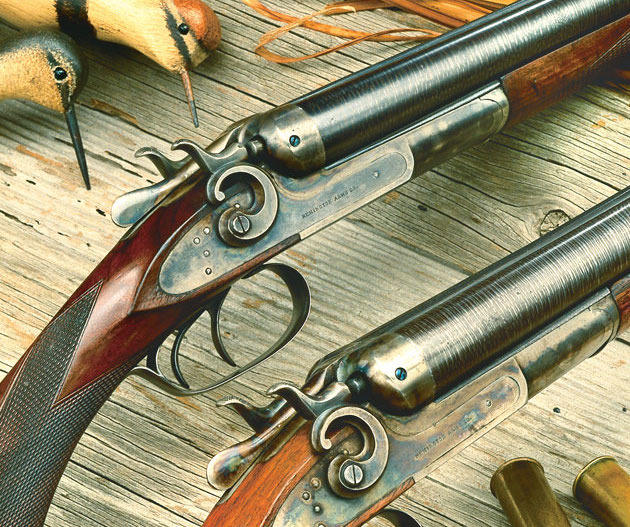
You turn to your wife, and picking up the gun like it was a dead skunk, you remove it quickly from sight, mentioning that she ought to take a look at the old newspapers since that seemed to be the year she was born. This will start a diverting argument that will so fully occupy the evening that the coming and going of the Parker will soon be forgotten. It is important that you never handle the gun in your wife’s presence until she is so used to seeing it cluttering up the garage over in the corner where the rakes and shovels are that she’ll be delighted to discover that you’ve put it somewhere else. Out of sight, out of mind is one of the cardinal rules of all gun acquiring.
Another useful technique is in the actual cost where it is impossible for one reason or another to conceal that you have actually bought another gun. This is known as the “New Dress Gambit,” or “The Wolters Shift.” Like all fine things, it is simplicity itself…and even if the Queen Bee does have the wind up and is sniffing the air like a dog on a covey, the clincher, the final sentence is guaranteed foolproof.
The scene opens as you return home with a mint-condition Model 12 Winchester Pigeon grade, original rib, and in a heavy leather leg-o-mutton case that is alone worth at least $35. You are chuckling to yourself as if you have just done something you think might make you feel a bit ashamed.
Wife: Well, what now? Don’t tell me you bought another gun, when you promised me…
You: (Interrupting quickly) Let me tell you what happened; see if I’ve done the right thing. I been saving for a while now to get a lamp for the living room that I saw at that antique shop. But I stopped in another place today and the lady asked me if I knew anybody that had any use for an old pump gun…and she brought out this Winchester. What’ll you take for it, I asked her, not seeming to be too much interested and still wandering around the lamps. Well, she says, a lot of people are collecting old guns nowadays and I get anywhere from $35 to $50. Well, I told her that I did like old pump guns and I’d give her $30 for it. “Sold” she said. Well, I’d saved $50, honey, and I can sell the case for $20, so that means that I have $35 left over for you to go buy a new dress.”
Here, you must reach down and fork over the $35 in cold cash! The transfer of cold cash and the mention of a new dress will hold her long enough for you to put the gun away, following the cardinal rule of “out of sight out of mind.” While you are messing in the gun cabinet, start talking about the color of the new dress. And don’t worry about her changing the conversation very much. I’m sure Eve could have, and did, go on for hours about picking a new leaf from the fig tree.
Editor’s Note: “Collecting Guns,” is a selection from Gene Hill’s A Hunter’s Fireside Book.
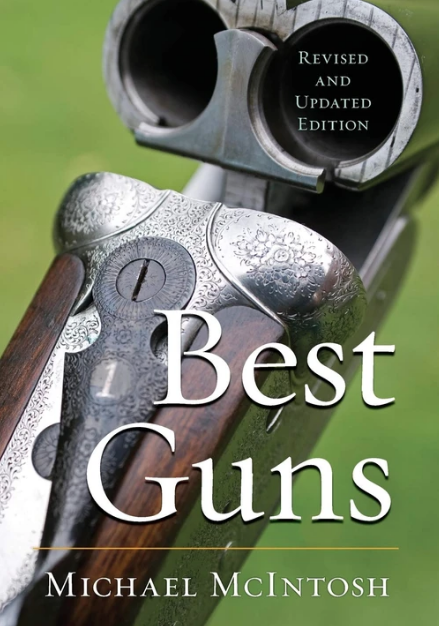 This is Michael McIntosh’s classic book on fine shotguns, in a fully revised and expanded form–covering gunmakers who have become prominent since the first edition was published in 1989 and McIntosh’s continued research into the nature of the shotgun and the people who make them.
This is Michael McIntosh’s classic book on fine shotguns, in a fully revised and expanded form–covering gunmakers who have become prominent since the first edition was published in 1989 and McIntosh’s continued research into the nature of the shotgun and the people who make them.
McIntosh offers practical advice on buying, shooting, and collecting older guns–what to look for and what to look out for, all based on long experience. McIntosh also offers advice on buying and shooting older guns–what to look for and what to look out for, all based on long experience.
As interest in fine double guns reaches a new high in this country, Best Guns serves as both a guide for the uninitiated and a standard reference for the experienced collector and shooter, all written with the precision and seamless grace that were Michael McIntosh’s trademark style. Buy Now

